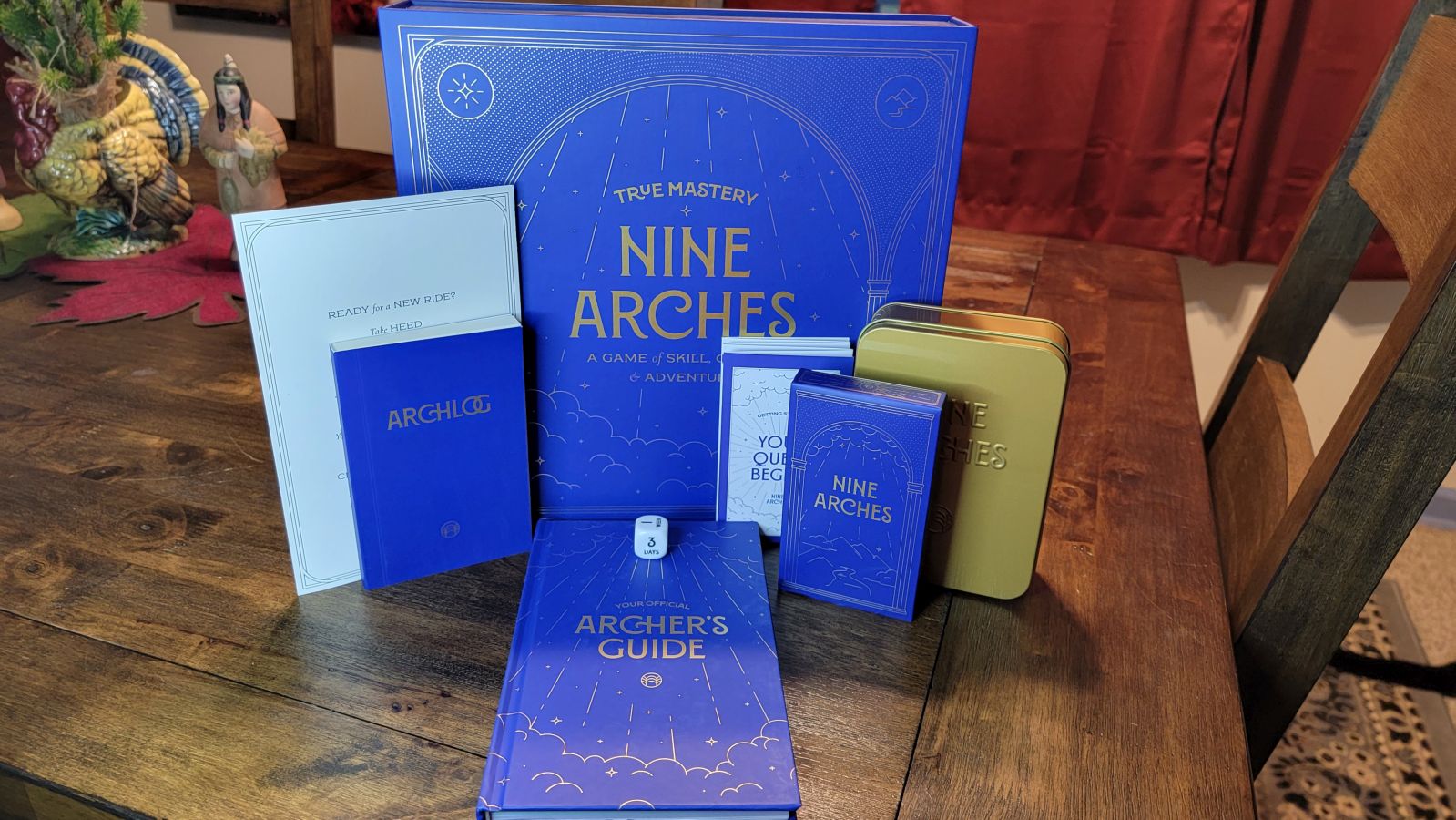Many of us spend our days stuck in an unfulfilling routine of work, chores, food, and then sleep, before we rinse and repeat for another day. So many hours are wasted on the mundane that when by some chance we find a bit of spare time, we’re too exhausted to make use of it. This pattern is unsustainable and we need to learn to break free of our self-imposed prisons – Nine Arches hopes to help people accomplish just that.
Part Tarot card pack and part choose-your-own –adventure, Nine Arches perfectly combines the two to create a stimulating and creative way to challenge individuals to seek out adventure, or – better yet – to learn to step out of their comfort zones and seek out new experiences. Created by New York Times bestselling journalist Geoffrey Gray and veteran game designer Grant Shonkwiler, Nine Arches is a painstakingly crafted and unique experience.
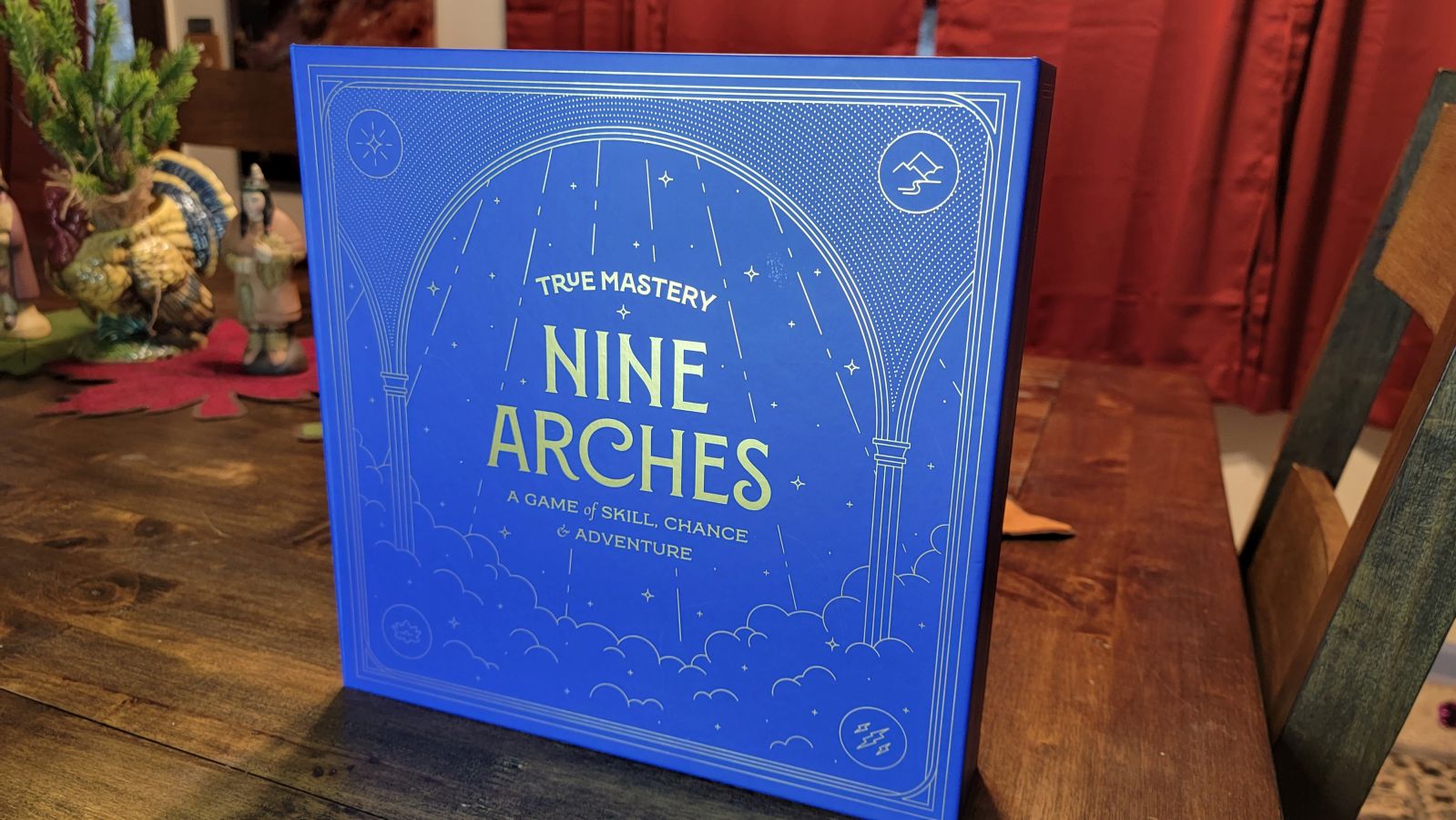
Before I speak about the experience itself, I must take a moment to gush about how gorgeous the Nine Arches set is. Encased in a sturdy, yet elegant magnetic blue box, you’ll find a collector’s tin holding all 54 gold foiled cards, a hardcover Archer’s Guide which explains various means of play and breaks down each card, a set of Destiny Dice, and an Arch Log to document your adventures. Every piece is laid out beautifully in the multi-layered foam casing, keeping each item held firmly in place.
The gold tin holds the beautifully hand drawn cards which were printed on 70mm x 120 mm linen card stock and feature gold foil piping and backs. Pictures really can’t do the cards justice as they look and feel amazing when in hand. The quality and craftsmanship is immediately apparent. The gold tin allows players to take the cards on the go while they remain protected, without the need to carry the entire large set.
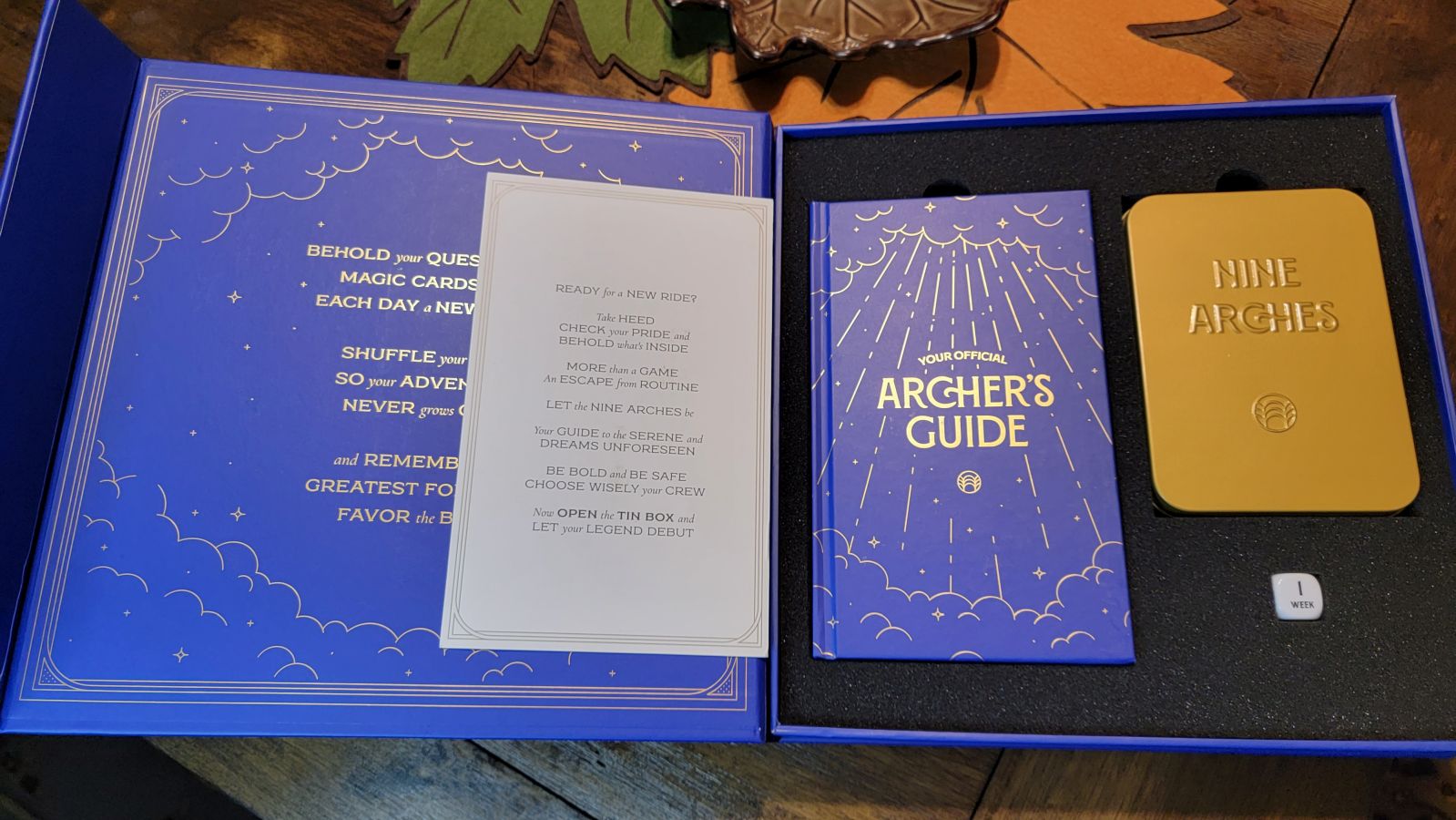
The cards are broken down into four sets: Delight, Escape, Flow, and Chaos. Delight is linked to acts of happiness or fun, Escape is linked to exploring nature, Flow is linked to fostering balance and harmony, while Chaos is linked to spontaneity. When in play, you can mix all the cards together or play from a particular suite of cards depending on your current mood. Mixing the cards together will create the most random and creative adventures, although there is no wrong way to play as long as you are open to allowing your mind to be stimulated.
The guide is over 200 pages and explicitly lays out the deeper meaning of each card you may draw, but leaves enough up for your interpretation of what the card is asking you to do. After all, this is a Tarot set at heart, but more of a Tarot set for people who were never really into pure Tarot card reading, such as myself. You are encouraged to interpret the cards in your own creative way, seeking out whatever adventure you feel the cards are calling you to do, or just using the cards to create the most elaborate experience you can think of. Either way, as long as you let your creativity flow you will almost certainly conjure up a great experience from whatever hand you may draw.
The two Destiny Dice are used to determine a time frame to complete the adventure laid out by your cards, but are not required for play. In fact, nothing is explicitly required – this is not a board game per say, but rather a game which hopes to spark experiences between people or within oneself.
The Arch Log is a small, sturdy journal which breaks down your experiences into various arches. You are encouraged to document each experience you are led on by the cards and work your way through the arches, hopefully allowing yourself to reach further and further outside your comfort zone to find enlightenment.


How to Play:
First, you need to set out a time frame where you are free and open to new experiences and willing to set off in whatever direction the cards may lead. Then, as this is Tarot based, you should close your eyes and focus on your desires. After focusing you will then shuffle your quest cards nine times and pick three cards. Read each card and use the Archer’s Guide to better understand their meanings, and then allow your creativity to flow and hatch a plan that involves all three cards. Obviously, there is no wrong way to do this – you simply allow yourself to give in to the experiences the cards are suggesting. Once your plans are concrete, you then either roll the Destiny Dice to determine a time frame – or head out to complete the plan immediately. As you complete the experience, you should document your story in your Arch Log, gaining points based on the numbers displayed on each card. You are encouraged to share your adventure online while tagging @ninearches, which may also net you special prizes and honors, and will hopefully persuade others to participate. Every three cards you complete move you up an Arch, pushing you closer to mastery of the Arches and – presumably – your life. After reaching the ninth arch you are considered a master and can then initiate master level play.
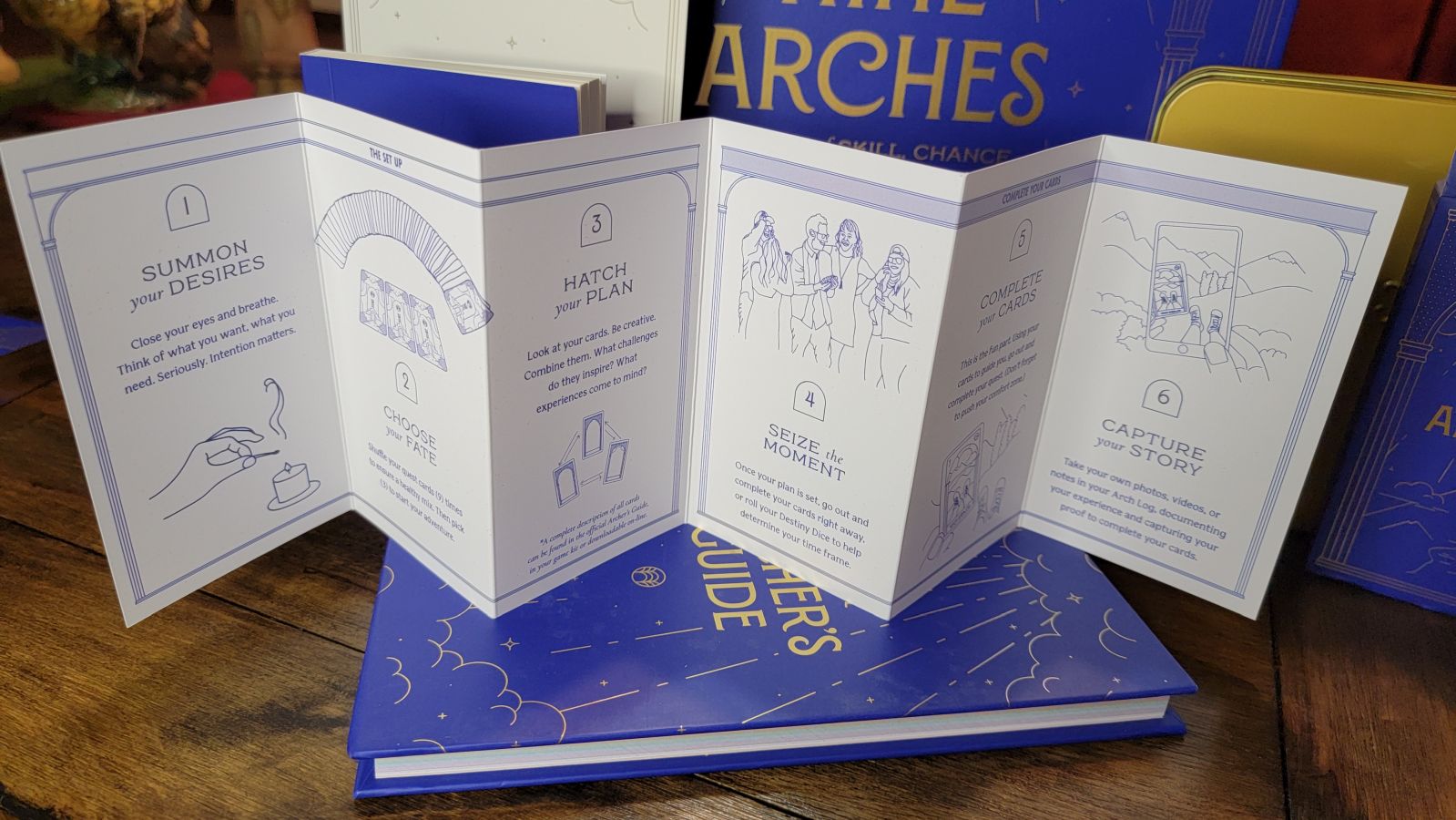
My Playthrough:
For my playthrough I decided to tackle the cards with my wife – If I’m going on an adventure, there’s nobody else I’d want at my side. I also knew that if the cards we pulled ended up being ones that would force me out of my comfort zone then she’d be the one to push me to not put the cards back and redraw.
We went by the two player multiplayer rules found within the Archer’s Guide, which had us shuffle the cards 9 times, then take turns pulling out 9 cards randomly and laying them out in an arch, and then taking turns to draw 3 of those cards. We drew “Daredevil”, “The Quill”, and “Healer”. While you can assume a good bit about each card’s intention from a simple glance, we decided to consult the Archer’s Guide to fully understand each card’s meaning.
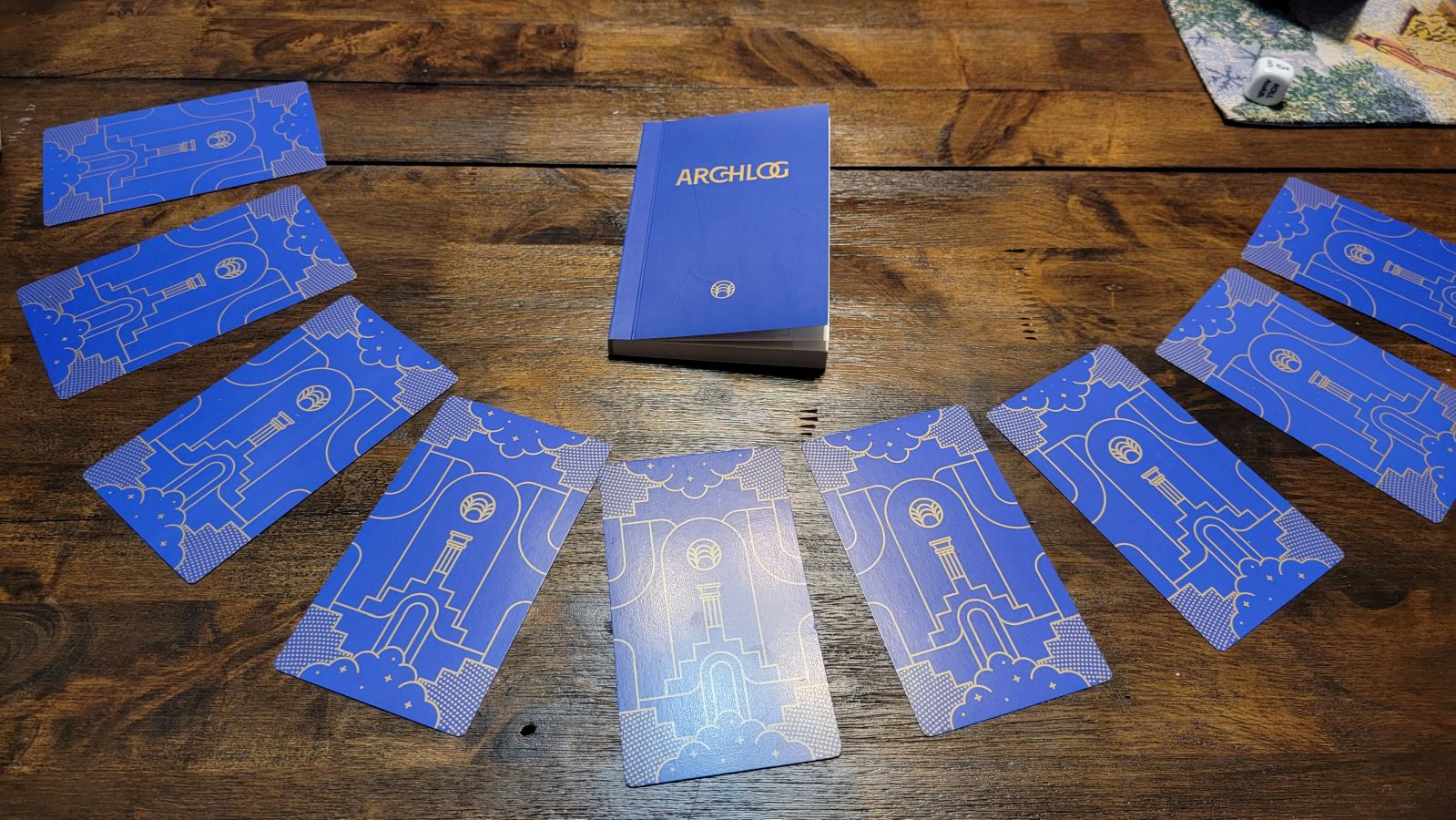
“Daredevil” clearly states that it is not a card meant to lure players into reckless danger; rather it is a card that asks players to “take chances, recognizing that the limits we draw up in ourselves are often artificial or constructed.” The guide goes on to state, “when we take small risks, we are not just thrown open to new possibilities, but in a deeper sense, we start becoming different people.” Already I could tell that it was a good choice to have my wife tag along, as this card was obviously going to make me break out of my normally quiet demeanor.
“Healer” was the opposite of what I expected, as when I found it in the guide the card was labeled “The Mask”, despite adorning the same picture yet being followed up with an explanation for “Healer”. A card that I originally thought to be referencing repairing a trauma in my life, instead dealt with breaking “free from the confines of your own identity,” and expressing “the various desires and facets of your personality.” More specifically, the card asks players to, “Use the card to construct your own mask or simply imagine one and embrace your new character,” enticing players to essentially become the opposite of who they are for a day.
Finally, “The Quill” – or “The Poet” as the Guide calls it – asks players simply to construct a no frills poem, more specifically to “chisel away at the artifice of language, blast away all filler, and focus on the mightiness of each word,” adding that it is essential for players to embrace their inner poet, while being cautious not to explain or justify their words, but rather to let their words remain open to interpretation. As a writer, this was the simplest card for me to grasp.
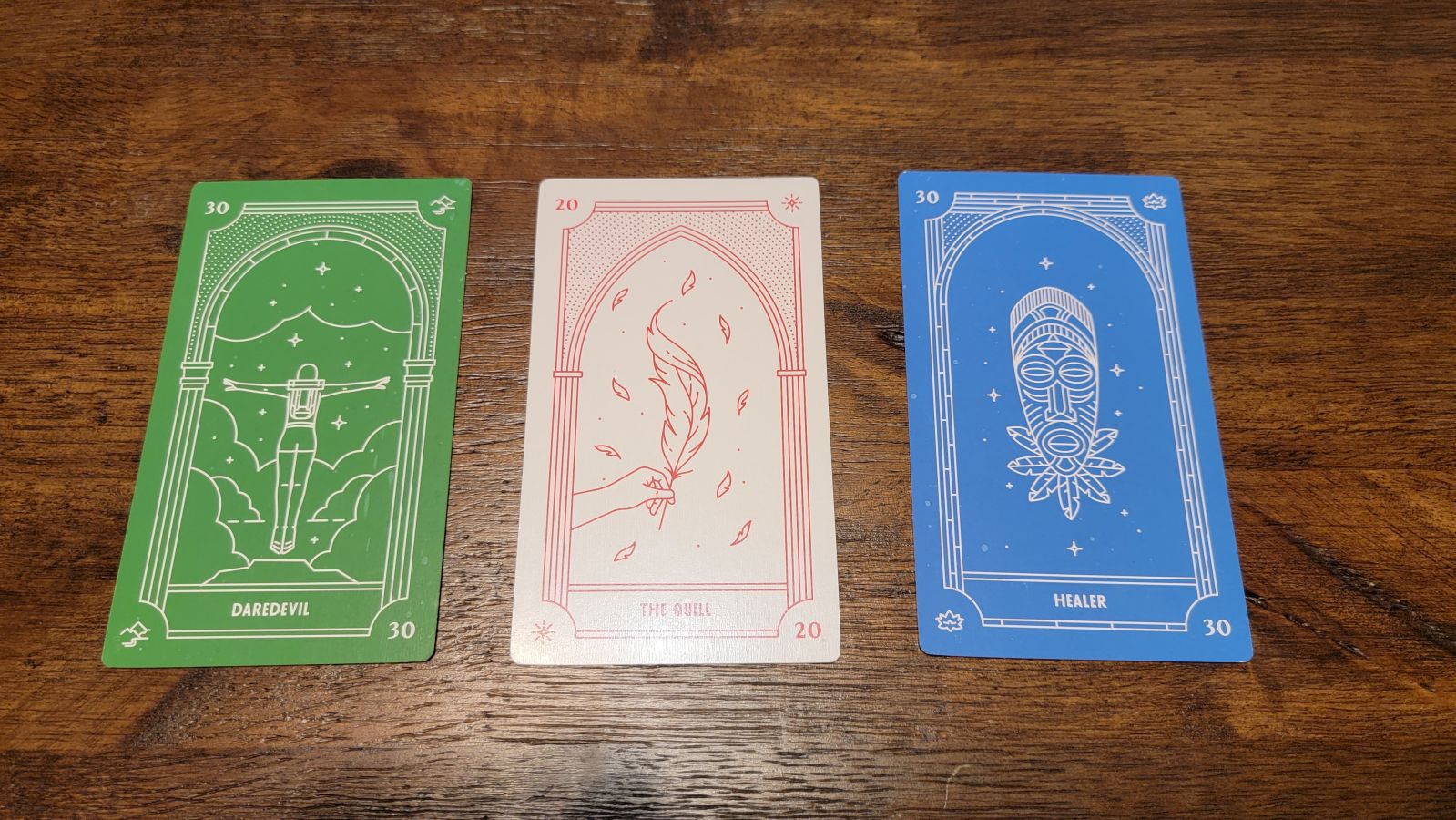
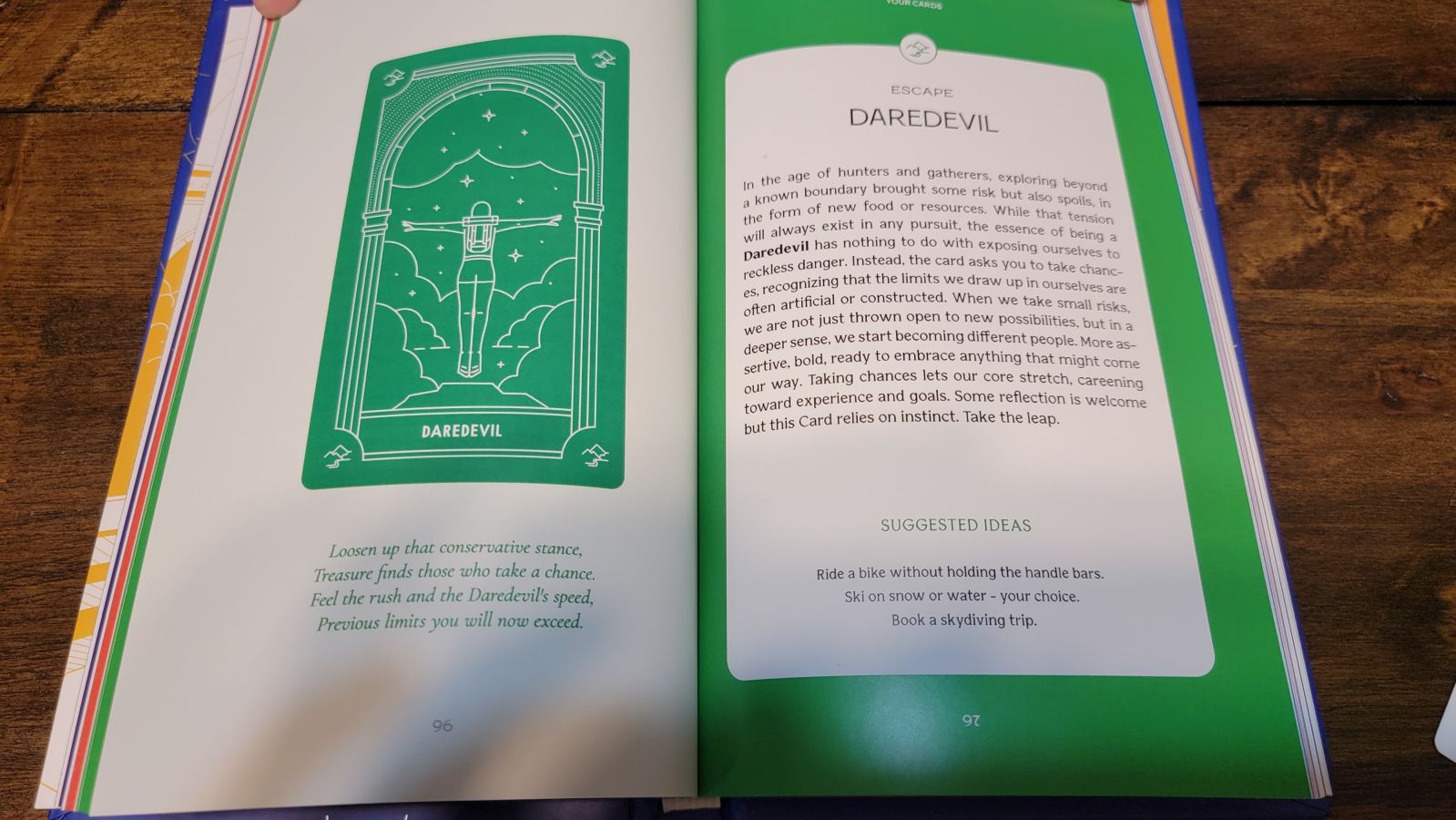
Now our task was to combine these three. While we debated several options, we settled on each of us constructing a poem where we speak about the person we could be if not held back by our masks – essentially our fears – and then perform each poem publicly to our friends, exposing ourselves and taking a risk of rejection. While I won’t post either poem in this review, I will say that the challenge was exciting and terrifying, forcing me to both step out of my comfort zone and to flex my creativity muscles, as poetry is not my strong suit.
A small downside – I was a bit confused by the cards and the Archer’s Guide differing on multiple occasions. This (intentional?) discrepancy never prevented me from completing a play through, although it did slow my wife and I down as we scoured the book attempting to find our card only to realize the exact match could not be found. From the “Healer” card stating “The Mask” alongside an explanation for “Healer” to “The Quill” card showing up only as “The Poet” in both depiction and explanation – the guide could use a bit of clarification as to why it differs from the actual card at times.
Richard Allen is a freelance writer and contributing editor for various publications. While he enjoys modern gaming, he is a retro gamer at heart, having been raised on a steady diet of Contra, Mario, and Dragon's Lair. Chat with him via @thricetheartist on Twitter.

I went into Nine Arches with no preconceived notions of what to expect and still came out impressed. A simple concept at heart, the beautifully designed cards, Archer’s Guide, and Arch Log flow together to create a unique experience – one that changes each time you lay the cards out in front of you and one that forces all who play to push their creativity. If you allow yourself to be open to experience whatever adventure the cards you draw may take you on, you’ll find that you are far more capable than you had previously thought. We all need a push to better ourselves – or sometimes just to get out of the house – and Nine Arches presents that push in a beautifully constructed way. Solo or with friends, Nine Arches is a delight to experience for those open to going with the flow.
PROS
- Beautifully constructed cards
- Highly detailed Archer’s Guide which explains in details each card and method of play
- The addition of the Arch Log helps players actively document their experiences
CONS
- The Archer’s Guide and cards sometimes differ, which leads to confusion
See below for our list of partners and affiliates:
